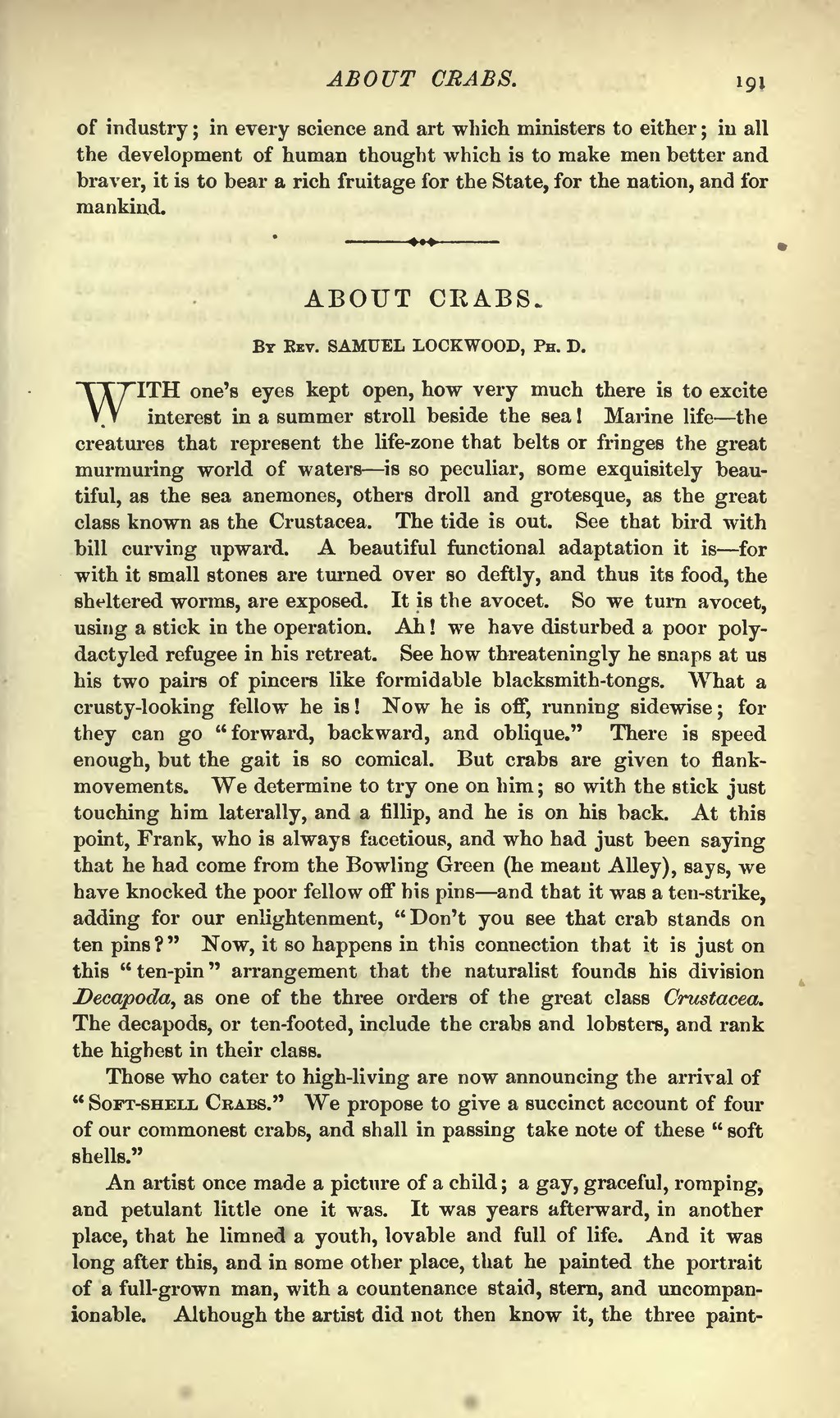of industry; in every science and art which ministers to either; in all the development of human thought which is to make men better and braver, it is to bear a rich fruitage for the State, for the nation, and for mankind.
| ABOUT CRABS. |
By Rev. SAMUEL LOCKWOOD, Ph. D.
WITH one's eyes kept open, how very much there is to excite interest in a summer stroll beside the sea! Marine life—the creatures that represent the life-zone that belts or fringes the great murmuring world of waters—is so peculiar, some exquisitely beautiful, as the sea anemones, others droll and grotesque, as the great class known as the Crustacea. The tide is out. See that bird with bill curving upward. A beautiful functional adaptation it is—for with it small stones are turned over so deftly, and thus its food, the sheltered worms, are exposed. It is the avocet. So we turn avocet, using a stick in the operation. Ah! we have disturbed a poor polydactyled refugee in his retreat. See how threateningly he snaps at us his two pairs of pincers like formidable blacksmith-tongs. What a crusty-looking fellow he is! Now he is off, running sidewise; for they can go "forward, backward, and oblique." There is speed enough, but the gait is so comical. But crabs are given to flank-movements. We determine to try one on him; so with the stick just touching him laterally, and a fillip, and he is on his back. At this point, Frank, who is always facetious, and who had just been saying that he had come from the Bowling Green (he meant Alley), says, we have knocked the poor fellow off his pins—and that it was a ten-strike, adding for our enlightenment, "Don't you see that crab stands on ten pins?" Now, it so happens in this connection that it is just on this "ten-pin" arrangement that the naturalist founds his division Decapoda as one of the three orders of the great class Crustacea. The decapods, or ten-footed, include the crabs and lobsters, and rank the highest in their class.
Those who cater to high-living are now announcing the arrival of "Soft-shell Crabs." We propose to give a succinct account of four of our commonest crabs, and shall in passing take note of these "soft shells."
An artist once made a picture of a child; a gay, graceful, romping, and petulant little one it was. It was years afterward, in another place, that he limned a youth, lovable and full of life. And it was long after this, and in some other place, that he painted the portrait of a full-grown man, with a countenance staid, stern, and uncompanionable. Although the artist did not then know it, the three paint-
